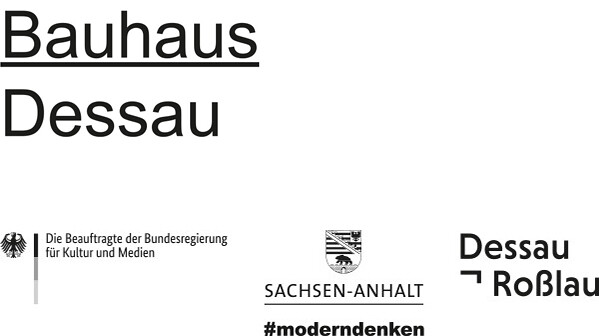Manda
June 1, 2023–January 7, 2024
Gropiusallee 38
06846 Dessau-Roßlau
Germany
Hours: Monday–Sunday 10am–5pm
T +49 340 6508250
service@bauhaus-dessau.de
The installation Manda by Isa Rosenberger will be on view in the workshop wing at the Bauhaus Building in Dessau starting Thursday, June 1, 2023. During her Bauhaus Residency in 2022, the artist went on a search for traces in the Bauhaus Dessau art depot with contemporary dancer Celia Millan. In the new work, this becomes the site and stage for a filmic-dance approach to two forgotten cultural protagonists and to a fragmentary historiography.
The starting point of Manda was the presence of two women at the Bauhaus in 1928: the dancer and choreographer Manda von Kreibig, who developed the Stick Dance at the Bauhaus with Oskar Schlemmer, and the writer and women’s rights activist Lu Märten (The Artist, 1919). As early as 1914, Märten encouraged women to be aware of the social obstacles to their artistic activity and to act in a self-determined way.
In Manda, Isa Rosenberger interweaves her historical research with general and current questions about the memory of museums and their responsibility in this very process of writing history. Statements filmed on the historic Bauhaus stage in Dessau by Regina Bittner, cultural scientist, curator and director of the Academy of the Bauhaus Dessau Foundation, and Barbara Steiner, art historian, curator and director of the Bauhaus Dessau Foundation, complement the installation. The title Manda not only refers to Manda von Kreibig but also means bequest, legacy or promise in Spanish. This is an indication that for Rosenberger, dealing with the past is always also a social mission from the deceased to the living.
In the exhibition, Manda is complemented by a second installation by Rosenberger: Espiral links Kurt Jooss’ famous dance theatre piece The Green Table (1932), created in the context of the Weimar Republic and after the stock market crash of 1929, with the world financial crisis of 2007/2008.
In the exhibition, the separation between artwork and exhibition display dissolves; architecture, work and performance are interlinked. Wooden structures, curtains and furniture are part of the respective work and serve as a structuring element of the exhibition as well.
Isa Rosenberger’s artistic interest is historiographical, as she takes a close look at the writing of history, its foreshortenings, fade-outs, and rewritings. Even more, with her filmic-installative works, she often goes in search of traces in order to give space and visibility to the hidden, the repressed, and the forgotten. In doing so, Rosenberger connects the body knowledge of her female protagonists, their personal, but also generation-defining experiences with socio-political events in the past and present.
The artist
Isa Rosenberger lives and works in Vienna. She studied at the University of Applied Arts in Vienna and at the Jan van Eyck Academie in Maastricht and teaches as a senior lecturer at the Academy of Fine Arts in Vienna. She has shown her artistic work internationally in numerous group and solo exhibitions; solo exhibitions have been held at Camera Austria in Graz, Bergen Kunsthall, Skirball Cultural Center in Los Angeles, Edith-Russ-Haus for Media Art in Oldenburg and Secession Vienna, among others. In 2008 she received the Otto Mauer-Preis (Austrian art award) and in 2012 the Outstanding Artist Award for Video and Media Art.
Manda was created as a co-production with the Kunsthaus Graz. It was shown in Isa Rosenberger’s most extensive exhibition to date, entitled Schatten, Lücken, Leerstellen (Shadows, gaps, voids), alongside six older works in spring 2023.



